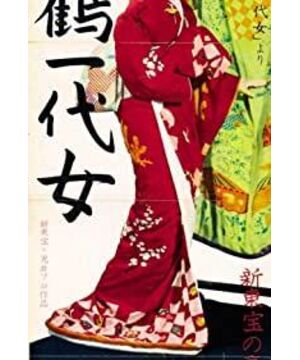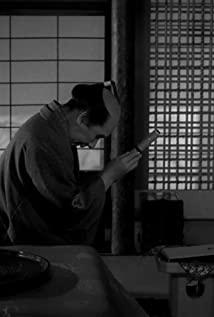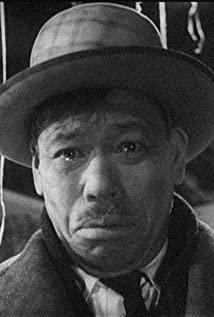Therefore, when Kenji Mizoguchi constructed this story, he was not so much a tragic woman, but that he was building a metaphor called Nishika. Everyone except Nishika was involved in the building and construction of metaphors. Finish.
Whether it is the bad men who hit the turning point of her destiny every time-these appear as the objects of criticism, of course, the essence of criticism is still the feudal society's patriarchal system rather than just the man himself; or it may light up her life. The good men — these men are always rugged, suddenly die or leave. This misery that is completely out of reality seems deliberate. If you understand it from the perspective of constructing a metaphor, you can find that they are just as a chess piece, from beginning to end. Kou Kenji is not trying to tell a true story, but just trying to tell a metaphor. Of course, there are also the effects of antecedents and consequences. Not all of them are deliberately arranged, but it may be said that this careful arrangement is a process that leads to an inevitable tragedy.
In addition to men, there are several images of women worth thinking about. First of all, Xihe’s mother, the wife of the feudal system completely obeyed her husband’s words, but still loved her daughter. However, as part of the feudal system, she could not help the daughter who was the target of the feudal system.
The nun who adopted Xihe, after seeing Xihe being raped, directly blames Xihe without any explanation. Not to mention that this is a victim theory. The nun is actually jealous like this. It actually implies that the nun in this film is not religious or Buddhist. A representative, but a secular image. She didn't help Xi He atone for his sins, but blamed her on her. This idea was inherently secular.
Next is a geisha playing by the side of the road. She is the metaphor in the metaphor. It is also the metaphor that is seeing another metaphor, the future of Xihe. It is also a hint from the director that there are many women like Xihe in this era, appearing in a variety of different images.
The lady that Xihe takes care of is a classic image of a woman under the patriarchal system. As an object of oppression, when unable to break free from the oppression, she oppresses women of lower status in order to vent her dissatisfaction. When Xihe hadn't been known by them that she was an unclean person before, she treated her well, but when she was discovered, her identity was revealed, her status declined, and no one respected her anymore.
Xihe's status is also constantly declining, and each decline is related to the last tragic experience, gradually pushing her to the next level. However, several declines have been suppressed by the upper level, and the women appearing at the upper level are all cruel and unsympathetic.
In a patriarchal society, the status of women is determined by men. Such a position is extremely unstable and insecure. Women with power are unwilling to give a helping hand to them. As a beautiful woman, Xihe brought them even more. A stronger sense of crisis. And looking back at Xi He who helped Geisha at the time, it is hard to say whether this is destined to fall to a similar social status as her in the future.
Until the end, Xihe was asked to let others look at her face to prove that Mai Chun was not a pretty girl. Her grimace, and the laughter of friends in the Buddhist hall, seemed to slide into helplessness and despair after all tragedies.
In the lord’s house, the carefully arranged telephoto lens, number, and railing implied an insurmountable status difference. In any case, Xihe could not surpass her class, not to mention that she was already at this time. She has a lower status than when she first became a concubine.
Nishizuru is a carefully arranged story, not a person. Nishizuru's fate is shaped by various external factors, so it is reasonable to call the film Mizoguchi Kenji a criticism of social reality and feudal system. , It’s just that when Xihe meets a good man, a good man will die. This looks particularly like blaming Xihe for being too hard, and returning from accusing society to accusing individuals.
In addition, Mizoguchi Kenji showed people's ugliness uncompromisingly, and did not justify the ugliness, which in itself is very reflective.
When it comes to the ending, it is better than the similar film "The Life of the Disgusted Pine Nuts" (of course, neither of these two are of the same level...). In the end, Xihe still converted to Buddhism, from his heart to religion. Unlike the nun of, and the deification of the pine nuts (to be honest, this is disgusting), Xihe finally found the most suitable master for his swaying life and the soul unable to find sustenance-Buddhism, rather than say this It was a very happy ending. At this moment, due to her own suffering, she has a broader understanding of life and a deeper acceptance of Buddhism. In such a world, she no longer needs to be bullied and blown by the wind. Instead, she takes control of her heart, calm and indifferent.
From a reality point of view, this is a tragedy of avoiding the world and being persecuted by society, but from the perspective of Xihe and from this story, going to Buddhism instead gives this story a broader meaning, if only staying in Ruxianglin My sister-in-law died tragically, then this is just a realist story, but after encountering all the sufferings, she still finds her home in religion, but it has become a spiritual symbol. All despair and suffering will eventually be There is Buddha to accept and accept everything.
Mizoguchi Kenji provides an escape from the reality of tragedy. It seems miserable, but in fact it can show a higher mental state.
Needless to say, the lens is so beautiful, and traces of carving can be seen everywhere, and each picture gives a feeling of painting and is very delicate.
View more about The Life of Oharu reviews











